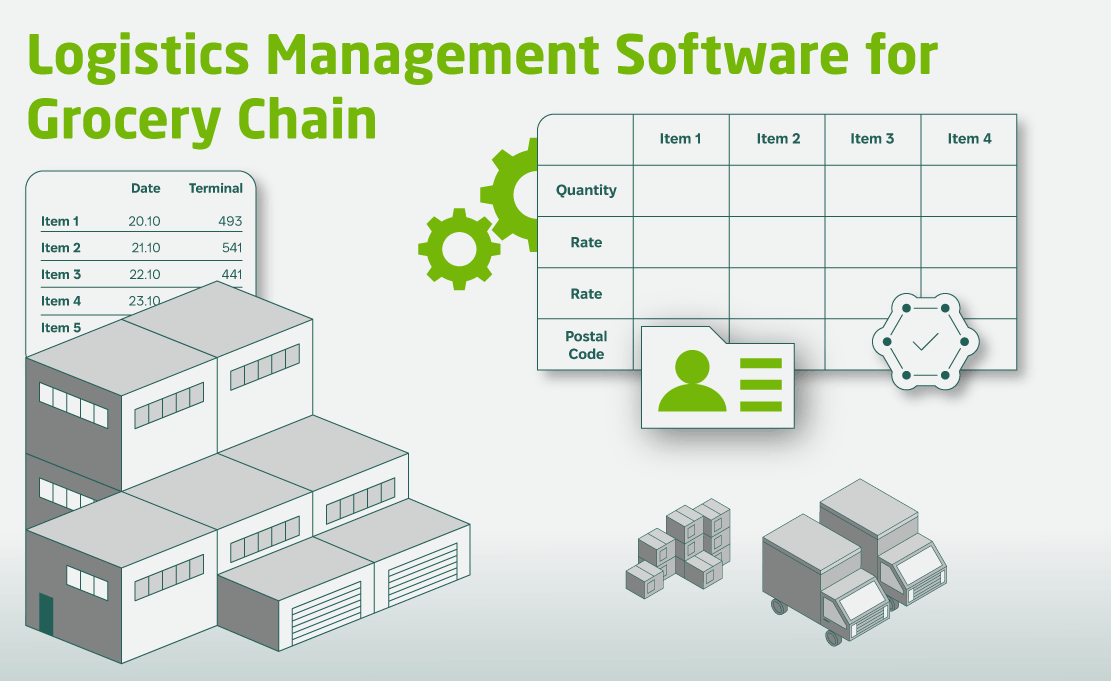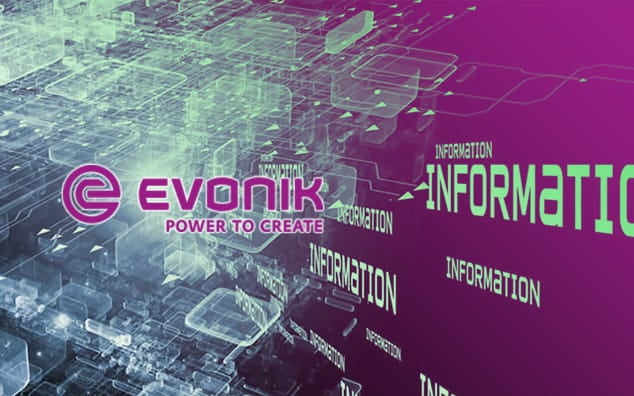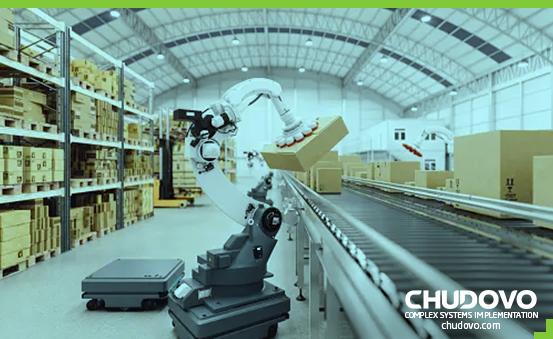How to build a modern, scalable logistic management platform in 2024
As the volume of goods grows daily, the delivery window also becomes urgent. So does the current logistic network, which needs to match the increasing growth. Hence, a structural approach is needed to build scalable platforms that enhance efficiency, speed, and cost-effectiveness across the supply value chain.
Table of Content
What is logistic management software?
Many moving parts are involved in managing logistics and supply chain. Logistic management software development can be a game-changer for businesses by streamlining these processes. This type of software typically offers features to handle various aspects, including:
- transportation management
- warehouse administration – for everything that goes into a warehouse, think about organizing and scheduling
- inventory control – keeping track of how much stock you have on hand
- freight control – managing the containers and trucks that move your goods
- order management – tracking customers’ purchases and other logistic-related issues
Logistic management software helps provide control and visibility, clear details, overview, micro-management of the movement of goods, and simplifying information for supplies to reach their various destinations successfully.
That being said, services that operate based on location use logistic management software to:
- gain understanding through information – by inquiring about location data, companies can predict demand and understand customer behavior.
- delivery optimization – the software tracks pathways and drivers instantly, ensuring efficient delivery and improved customer satisfaction
- companies can track order status, monitor shipments, and manage inventory levels. This credibility helps ensure smooth operation, better customer interaction, and, by extension, customer satisfaction.
There is an ongoing debate about choosing the best transport management system. Choosing between a cloud-based transport management system and an on-premise one is a big decision for businesses these days. For cloud-based TMS, there is no need to purchase new servers, so it is a good way to save money. Another advantage is that anyone with an internet connection anywhere in the shipping process can easily access the system. However, some large production and distribution companies might hesitate to use the solution due to security reasons and the responsibility of maintaining their own server. And because of this, they recommend sticking with the on-premise systems.
Benefits of a logistic management system
Organizational needs and preferences determine which solution to rely on, either cloud-based or on-premise, which are the two methods of implementing a logistics management system. These methods make it easier for companies to manage logistic duties relating to production, sales, internet shopping delivery, and transportation.
Proper management is, however, essential for a business’s success. So, does providing safe, quick, and reliable shipping, storage, and distribution of commodities increase an organization’s worth. A business experiencing expansion needs an efficient logistics software solution that will strengthen administrative processes, leading to increased productivity and delivery.
Applying this type of solution will enhance your business performance, improve effectiveness, reduce delay, and save costs. It also monitors warehouses, raises awareness, and hastens the delivery of goods. Other benefits include:
Reliable and quick delivery
Perhaps one of the most important aspects of the logistic market is the delivery of goods. Adopting innovative technologies will help create a structured approach to distributing items promptly, efficiently, and securely. Providing routing adjustments and automating purchasing possibilities is a very good way to quicken the completion of procedures. Shipping and goods delivery procedures become fast, there is improved customer satisfaction which is an overall elevation for the business growth.
While sustaining business advantages, logistics is concerned with improving efficiency and productivity. With the software development of a logistic management system for your organization, you will prevent the waste of resources, achieve a standard of excellence, and minimize flaws and discrepancies.
Decreased operating cost
Using historical data, the logistics management system optimizes route delivery. It helps businesses to know the exact location to transport and ship their goods through, describing in detail how free or congested a particular road is, which allows for a proper planning to be able to deliver goods on time, hence making customers want to purchase more goods from such a company. This system increases overall business efficiency by reducing the fuel used in trucks to ship items to customers and warehouses for storage.
Production procedures are optimized to ensure that there is no excess inventory and shortages are avoided. Wasteful spending is cut down, helping businesses minimize expenses, resulting in low labor costs.
More Revenue generation
Using well-organized information will help you manage the supply chain, which involves the production and distribution of goods, minimize costs because businesses will know the amount of commodities to produce and ship to various locations for sale, and make informed choices because they know what their customers want. This will help you satisfy your customers and increase your revenue.
The company’s revenue and execution rate are greatly improved — they generate more money for the business and are able to make plans and goals to help expand the horizon and customer of the enterprise, with logistic management implementing automation to help businesses understand their business activities in detail and fully. This boosts consumer interaction and decreases the need for excess supplies, helping the organization profit more and save costs.
Better customer fulfillment
You can empower your business to deliver a good customer experience. These logistics management services allow you to access innovative shipping options and better client support. Your customers will gain satisfaction and become advocates for your brand.
Customer interaction can be improved by utilizing supply chain and logistic software concentrated on improving businesses, including tracking and good visibility. Consumers’ credibility and satisfaction are achieved through accurate product delivery and continuous updates. These factors stem from proper communication with consumers. A pleasant customer experience is made certain because companies leverage this type of software to meet users’ needs.
The logistics platform provides improved insight into process performance and execution, increasing overall productivity. It provides substantial information enterprises use to generate valuable guidance and proactively meet customer demands.
Scalability and flexibility of logistics operation
Companies that utilize these logistics platforms have the upper hand in the industry to elevate their enterprise because they can use the latest developments to build software for their businesses to boost the growth and expansion of logistic operations.
As businesses grow, their needs change. Custom software is built to expand your company, easily integrating with your evolving process and purpose. As there is no expensive transition or limitation, it becomes easy to achieve your objective.
Detailed navigation scheduling
The software integrates an innovative scheduling system to build a logistics management platform. This allows businesses to identify and choose pathways that are most suitable for faster distribution and delivery of items and goods. Thus, it reduces unnecessary journeys, avoids congestion on busy roads, and enables timely distribution to consumers.
Also, there are complex navigation plans that this software can help improve. Some of which include computational methods of when and how to deliver items, combing current information to provide assistance and details about specific routes, managing and merging loads to be delivered, controlling fleets, giving representational information to help get a clear picture of location delivery, generating information assessment and interacting with other systems all of which aid to reduce travel expenses of freight and improved customer service.
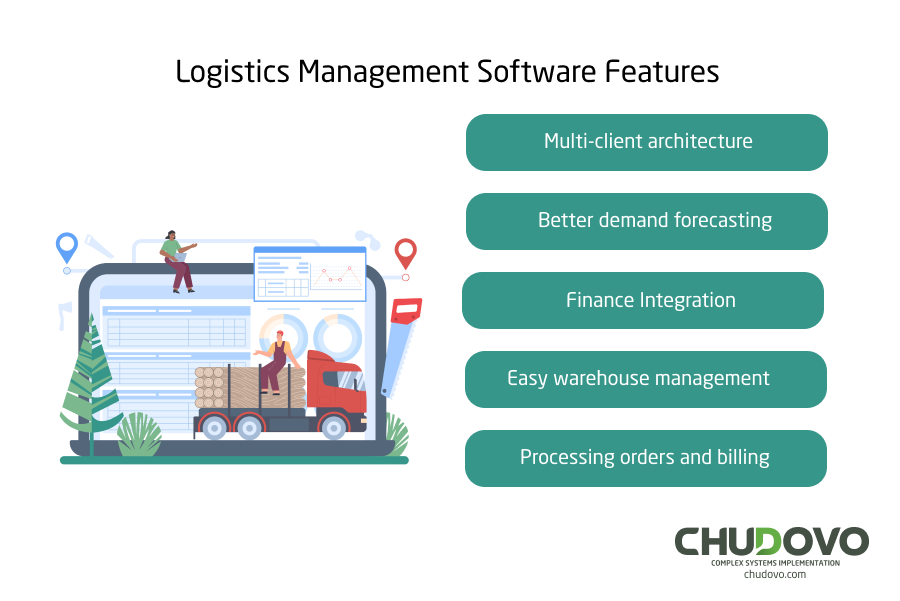
Developing a logistic management system software
If you want to develop software solutions for logistic management, there are some important steps that need to be considered and followed. These processes will give a clearer picture of your objectives, like how you want the tool to work in order to meet the demand of consumers and the features needed in the app to also assist those involved in shipping these goods through seamless transportation means and overall help you tailor your idea to make the logistics system software a success in your business. Thus, the steps include:
1. Outline the project goal.
This is the first step you cannot afford to get wrong. Here, you clearly state what you intend to achieve by developing the logistics software and what the features would look like. Is the goal to achieve customer satisfaction or to reduce delivery time, or maybe the aim is just to make the overall logistics process seamless and smooth? Your answer to these questions will influence how you eventually build the software.
2. Select a technology stack.
When choosing a tech stack to build your project, you have to consider scalability so your application is adjustable to match your business as it grows and expands. Security— for instance, use a programming language that is vast in helping to protect users’ data when used to build software. It is also important to know if the tech stack is suitable for web and mobile development so as to give your business great visibility.
3. Development of the software
Here is the technical phase where the actual building of the software begins. At first, you need to build frontend components that users can interact with when they want to use your product. This includes the interface where they can see the services your business offers, purchase goods, make payments for their transaction, and also know when and how their goods will be delivered. User experience features that will help them to navigate your application seamlessly either by visiting each product and service page to get what they want or using a dashboard where they can easily manage all their activity on your website or app.
The core part of the development phase is the backend, where the architecture and logic of the business are carried out, and integration of API enables people who visit the page to be able to communicate successfully with the server – the place where information is coming from, management of the database to store user information and every detail about the service a company offers and the product they sell, and security enhancements like authentication to protect users’ information from being breached.
4. Testing and debugging
This is the stage where you get the green light or quality assurance that your software is ready for use. Two steps are taken to achieve this:
- security testing to ensure users’ data is protected from prying eyes such that no one except authorized users can access sensitive information on this platform.
- Performance testing to make sure that every functionality in the app, either mobile or web version, is working as expected.
5. Deployment
After conducting security and performance testing, the next and final phase is to deploy it to your desired platform. We know there are two platforms businesses use for this purpose: the on-premise method and the cloud-based. A comprehensive evaluation and verification are carried out to ensure the program works as intended. If all of these are successful, the software is enabled and made available to users.

Certified engineers
Convenient rates
Fast start
Profitable conditions
Agreement with
EU company
English and German
speaking engineers
Features of logistics management software
There are essential features required in logistics software to reach and satisfy users’ desires for better and more efficient delivery of services. Below are some of these features:
- Improved predicting demands
If businesses can accurately predict the market cost and need for valuable items, supply management firms can conveniently handle their materials without encountering shortages.
- Fleet management
This is needed in a logistic management system in order to deliver items effectively and manage the processes. It helps identify better pathways that are easily accessible and free of congestion so that consumers get their orders on time and as expected.
- Finance integration
By leveraging this feature, logistics companies can easily track their expenses and how much revenue is generated.
- Seamless management of the warehouse
storage and transportation of items from warehouses to customers’ locations, and overseeing this process becomes easy to manage for businesses.
- Handling requests and payment
Using this software enables an efficient platform where users can pay for logistics services offered to them without hassles.
What are the most prevalent segments in logistic software?
Transport planning segment
The logistics industry involves various operations in managing transportation, one of which is the conveyance of items. Therefore, this software will be helpful with filtering suppliers, dispatch time management, distribution, and surveillance. It also provides solutions for freight movement paperwork and cargo costs and enhances delivery routes and shipping paths.
Inventory handling segment
This component helps businesses control the amount of stock available and guarantees that the correct amount is being kept on record to meet their users’ needs. It also reduces the cost of the inventory initiative, helping the organization save.
Warehouse handling segment
Warehouse management can enhance the mobility of merchandise and manpower, supervise supply, and store goods. The mode of operation in the warehouse involves tracking goods using computer software and technology, maintaining an ideal working environment, sending and receiving commodities, and controlling warehouse staff.
Order management segment
This component helps to regulate and oversee order completion procedures from purchase preparation to the shipment of these commodities to their various location where needed. It has many different functions to support and hasten purchase-related procedures.
Awareness of the supply network
According to Statista, the world yearly earnings of the supply chain management software market are projected to grow by 19.24% in 2024 and 2028, approximately 3.9 billion US dollars. The indicator is expected to hit a new high of $24.19 billion in 2028.
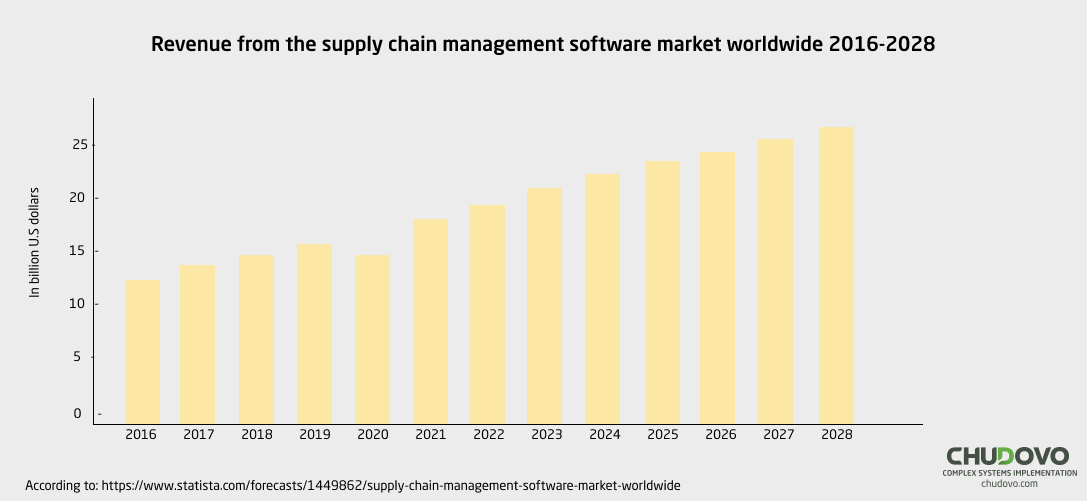
This category creates instant insight for businesses throughout all aspects of the supply network. You can manage the investigation of the amount of stock available and gather information concerning the operations of shipping companies. It contains features like information assessment and visual representation to support decision-making processes.
Return logistics
Regardless of how tedious this process might seem, It is crucial to have this component in the logistic management system because it helps simplify the procedure of replacement and repair requested by a customer. Here are the processes that make this possible.
Information tracking
If it happens that a customer returns a product due to dissatisfaction, there must be a record of placement and the rationale behind the return. This improves the information and understanding about the returned package, whether it was originally sent back to the company, and whether it was truly shipped to the customer.
Current report
It is important to give consumers instant feedback on a product they returned, maybe through an email or SMS. If customers can get detailed information about a parcel they sent back, this will increase their satisfaction.
Monitoring for reliability
Customers should be able to monitor the movement of the items they request from a warehouse. This will help prove the credibility of a logistics company’s service.
Frequency Asked Questions
What is logistic management software development?
They are tracking software that simplifies the shipping procedure of items and provides instant information on delivery. The software supports a more comprehensive assessment of the current condition with a greater understanding of shipping, commodity acquisition, and overall logistics procedures.
Can you incorporate logistic management system software into an existing platform?
Yes, it is possible for developers to incorporate logistics apps into present platforms. This ensures that, alongside additional technologies, there is a seamless connection between an app and these two seemingly different platforms and helps improve the system’s efficiency and usability.
How do you define a logistics technology firm?
A logistics firm is responsible for transporting goods, services, or information from one location to another. A logistic technology company uses digital solutions to improve its services, which include monitoring commodity storage, delivery, procedures, and management of services they provide.
What is the workflow of a logistics management system software?
Logistic software can optimize the amount of available stock in a company’s store space, how goods are shipped and delivered, correctly estimate consumers’ needs, and evaluate business procedures.
Contact the Chudovo engineering team to develop a logistic management system software for your business.

